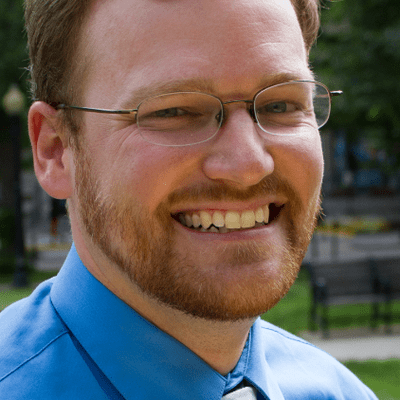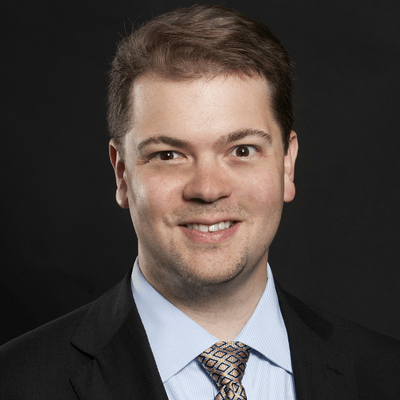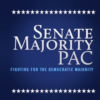Introduction
Editor’s note: The Center for Public Integrity tracked political advertising in races for the U.S. Senate, state-level offices and state ballot measures. Use these three interactive features to see who was calling the shots and where the money was spent.
Republican candidates wagered that big bucks from outside political groups could overcome their own fundraising shortfalls ahead of the 2014 midterm elections.
They were right. On Tuesday night, Republicans won control of the U.S. Senate for the first time in eight years.
In many of the states the GOP won Tuesday, Republican candidates themselves didn’t primarily execute what proved to be a wildly successful strategy of linking Democratic candidates — from Colorado to North Carolina — to an increasingly unpopular President Barack Obama and his policies.
Instead, deep-pocketed conservative groups — including a cluster of groups tied to Republican strategist Karl Rove and a network of groups backed by billionaire industrialists Charles and David Koch — together sponsored hundreds of thousands of TV ads that relentlessly attacked Democrats for their ties to Obama.
The prominence in 2014 of non-party groups such as super PACs and politically active nonprofits underscores the way election funding has changed since the U.S. Supreme Court’s Citizens United v. Federal Election Commission ruling in 2010.
Democrats, who enjoyed a six-seat Senate majority going into Election Day, attempted to defend themselves from an expected Republican onslaught.
Numerous incumbent Democrats outraised their GOP rivals, and liberal donors dug deep to support a pro-Democratic super PAC — Senate Majority PAC — that became the top sponsor of Senate-focused campaign ads this election cycle. Democrats even dabbled in so-called “dark money” through secretive nonprofit groups, such as Patriot Majority USA, that don’t disclose their donors.
But it wasn’t enough. Republicans are now predicted to control at least 52 U.S. Senate seats next year.
“When the outside money comes in in substantial amounts, you don’t have to make any choices,” Norman Ornstein, a scholar at the conservative American Enterprise Institute, said about Republicans’ midterm resources.
Had Republican candidates been left to their own, Ornstein continued, “my guess is you would not have seen nearly as much money going into places like Colorado, Iowa, New Hampshire — even Alaska.”
Total TV ads in the 2014 battle for the Senate through Nov. 3
Source: Center for Public Integrity analysis of Kantar Media/CMAG estimates of ads aired from Jan. 1, 2013, through Nov. 3, 2014. More here.
Groups connected to Rove and the Koch brothers were among the biggest winners in Tuesday’s midterm elections.
Of the 10 U.S. Senate races where either the Rove-linked nonprofit Crossroads GPS or its sister super PAC, American Crossroads, was active, their favored candidates prevailed in at least six — with the Alaska Senate race still too close to call at this writing and a runoff election coming next month in Louisiana.
Similarly, of the nine U.S. Senate races where the Koch-backed Americans for Prosperity was active, its favored candidates also prevailed in at least five contests.
Only in New Hampshire and Michigan did the Crossroads groups and Americans for Prosperity see defeat.
In the Granite State, incumbent Sen. Jeanne Shaheen kept Republican challenger Scott Brown, who previously represented Massachusetts in the U.S. Senate, at bay. And in Michigan, Rep. Gary Peters defeated former Sec. of State Terri Lynn Land to win an open seat race.
As of press time, incumbent Sen. Mark Begich, D-Alaska, was trailing GOP challenger Dan Sullivan, the state’s former attorney general and natural resources commissioner, by about five percentage points.
Ultimately, the current occupant of the White House decided the 2014 election, said Steven Law, president of American Crossroads.
“This election was about President Obama,” Law said in a statement.
Levi Russell, a spokesman for Americans for Prosperity, did not respond to requests for comment.
In a marked contrast from the 2010 midterm elections, Democrats, too, embraced the post-Citizens United world of big-money politics, even while they continued to bemoan it.
That high court decision allowed corporations, including certain classes of nonprofit corporations, to spend funds to expressly advocate for the election or defeat of federal candidates.
The decision also paved the way for super PACs, which may accept unlimited contributions but must disclose their funders.
During the 2014 election cycle, the pro-Democratic Senate Majority PAC—which is run by allies of Senate Majority Leader Harry Reid, D-Nev. — produced more than 50,000 ads—more than any other outside spending group, according to a Center for Public Integrity review of data provided by Kantar Media/CMAG, a firm that tracks political advertising.
And a pro-Democratic nonprofit called Patriot Majority USA — that is linked to Senate Majority PAC — played attack dog in the South, where several incumbent Democrats faced strong GOP challengers.
Just two of the candidates backed by Senate Majority PAC and Patriot Majority USA won on Tuesday — Peters in Michigan and Shaheen in New Hampshire.
Six of Senate Majority PAC’s favored candidates went down to defeat, while Patriot Majority USA saw four of the Democratic candidates it supported lose.
Both also backed incumbent Sen. Mary Landrieu in Louisiana, who is now headed to a Dec. 6 runoff with Republican rival Bill Cassidy.
Officials with Senate Majority PAC and Patriot Majority USA did not respond to requests for comment.
‘Dark money’-funded TV ads in Senate races
Source: Center for Public Integrity analysis of Kantar Media/CMAG estimates of ads aired from Jan. 1, 2013, through Nov. 3, 2014. More here.
Overall, more than 1 million TV ads have aired since January 2013 as Democrats and Republicans battled for control of Congress’ upper chamber, according to Kantar Media/CMAG.
In many of the most pivotal Senate races, outside groups accounted for nearly one of every two ads.
Dark money groups that don’t disclose their funders accounted for at least one of every five ads in six of the hottest Senate races: Arkansas, North Carolina, Colorado, Kentucky, Louisiana and Michigan.
According to a Center for Public Integrity review of data provided by the Center for Responsive Politics, just two Senate contests saw outside groups spend more on elections than the candidates themselves in 2012 — Virginia and Indiana — and there were no such races in 2010.
This year, however, there could be more than half a dozen such contests when final numbers are tallied.
And the spending gap between candidates and outsiders has grown — dramatically.
In 2012, candidates in Virginia and Indiana nearly matched dollar for dollar what outside groups spent in those contests. This year, in some cases, the outsiders have spent more than double what the candidates had at their disposal.
Take Colorado, for instance, where Republican Rep. Cory Gardner — with the aid of the Crossroads network, Koch groups and the U.S. Chamber of Commerce — ousted incumbent Democratic Sen. Mark Udall. The two men had collectively raised about $30 million for their campaigns as of mid-October, according to a Center for Public Integrity review of filings with the Federal Election Commission.
Yet all outside groups active in Colorado had reported spending about $55 million to the FEC as of Tuesday, according to the Center for Responsive Politics. (Party committees also reported spending an additional $14 million.)
Similarly, in North Carolina, incumbent Democratic Sen. Kay Hagan and state House Speaker Thom Tillis, her Republican rival, collectively raised about $32 million as of mid-October.
Groups that were neither parties nor controlled by candidates reported spending about $58 million in that contest as of Tuesday — and parties spent an additional $19 million, according to the Center for Responsive Politics.
Hagan outraised Tillis by a ratio of more than 2-to-1 and liberals accounted for about 55 percent of all TV ads aired in the contest, yet Hagan still lost to Tillis on Tuesday night.
In the final days of North Carolina’s race, which will likely go down as the most expensive Senate contest in U.S. history, a Senate-focused TV ad ran once every 50 seconds somewhere in the state. Most of the ads were decidedly negative.
Meanwhile, in Virginia, incumbent Democratic Sen. Mark Warner found himself in an unexpectedly close race with Republican challenger Ed Gillespie, a former lobbyist and ex-chairman of the Republican National Committee.
The Virginia contest had been all but ignored by outside spending groups, and Warner himself ran more than half the approximately 26,000 TV ads aired in the race, according to a Center for Public Integrity analysis of data provided by Kantar Media/CMAG.
The Virginia Progress PAC, a single-candidate super PAC supporting Warner, aired about 3,400 ads, or about one of every eight TV ads. It told the FEC it spent about $1.8 million on ads, but it was silent since early October.
Only one conservative outside group appears to have run TV ads in Virginia: the 60 Plus Association, which ran fewer than 400 spots, according to Kantar Media. Meanwhile, the NRA Institute for Legislative Action, the lobbying wing of the gun rights powerhouse, reported spending about $410,000, much of it to promote Gillespie with phone calls and direct mail.
As of press time, Warner held a very narrow lead over Gillespie.
The increased use of big-money groups in politics — particularly those that do not reveal their funders — worries some political observers.
“The more undisclosed big money in elections, the poorer our democracy,” said Rick Hasen, a law professor at the University of California, Irvine.
Disclosure “helps to ferret out corruption,” Hasen continued. “When journalists and voters can follow the money, they can look for politicians acting in the interests of those who contribute or spend toward their election.”
But former FEC Chairman Brad Smith, a Republican, thinks fears of dark money influencing the election are overblown.
“I have never heard, nor heard of, any ordinary voter expressing alarm that any particular ad was produced by a dark, scary money group,” Smith said.
Organizations that raise concerns about dark money, Smith continued, are part of “an effort by people who really want to restrict political speech, to scare voters and whip up fears about nothing.”
The Internal Revenue Service plans to draft regulations in early 2015 that aim to crimp certain nonprofits’ ability to engage in politics.
Don McGahn, a former Republican chairman of the FEC and current attorney at law firm Jones Day, predicted such efforts may prove futile.
“If the IRS tries to change the rules, they’re in for one hell of a fight,” he said. “It will get a lot of people wound up, and you’ll see a lot of litigation.”
Read more in Money and Democracy
Money and Democracy
State politics findings you may have missed
The Center’s best state politics stories from 2014
Money and Democracy
Koch-linked organization uses ‘dark money’ to fight political disclosure
Most of the $13 million raised by American Commitment has come from three Koch-backed groups





Join the conversation
Show Comments